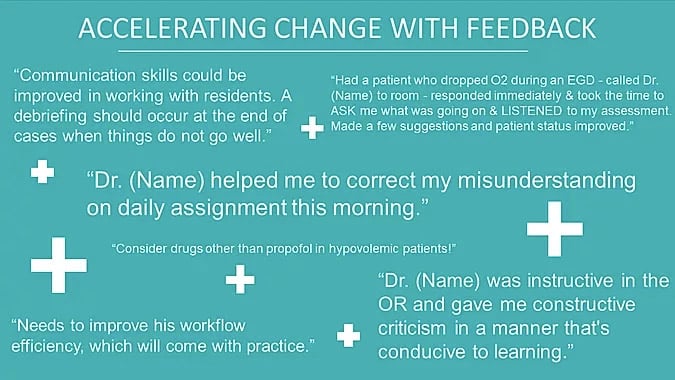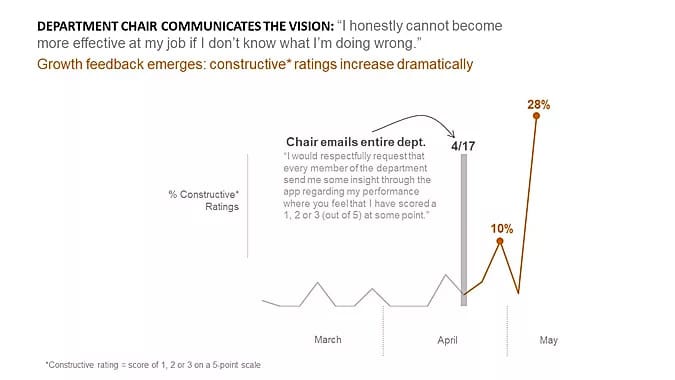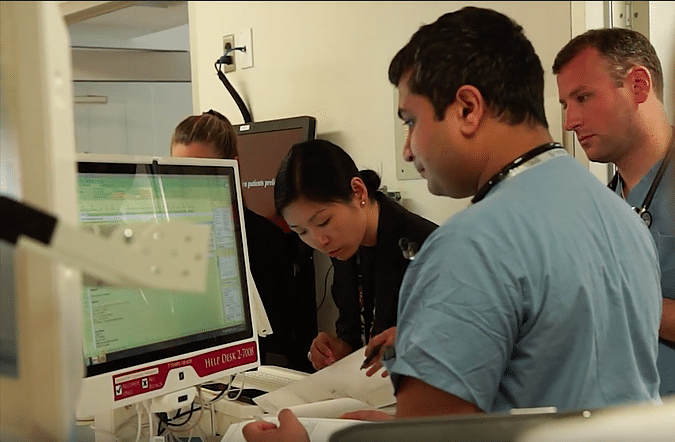According to the Sentinel Event Alert (2013), “communication” is cited as a major root cause of reported sentinel events. A Sentinel Event is defined by The Joint Commission (TJC) as any unanticipated event in a healthcare setting resulting in death or serious physical or psychological injury to a patient or patients, not related to the natural course of the patient’s illness. The most commonly reported causative factors include “problems with hierarchy and intimidation,” “failure in communication with physicians” and “failure of staff to communicate relevant patient information.”
Communication effectiveness is limited in large part due to the traditional communication hierarchies within healthcare. Feedback and communication within the healthcare industry typically flows downward, starting with the faculty, followed by residents, before finally reaching nurses and administrative staff. Unfortunately, this millenia-old pecking order results in employees not receiving feedback from those who are working directly beside them. Moreover, supervisors do not know changes to make for the benefit of their direct reports. The following user stories exemplify typical healthcare employee frustrations:
“I’ve been a nurse for 20 years and I know how to administer a stent with pinpoint precision,” Sue lamented after a long, stressful day. She thought to herself: “Today’s training could have been much more effective, had the handful of residents in greatest need of help were more receptive to constructive feedback. There has to be a better way.”
As Jared, a second-year medical resident, changed out of his scrubs, he thought to himself: “I wish I learned more today from the attending physician. I felt certain information was redundant and would loved to have spent extra time on certain subjects. We should have had a debriefing at the end of today’s cases to learn what did and didn’t go well.”
Susan, a veteran physician, noted the continued excellence of one of her residents. Between shifts she reflected, “John has been excelling at all the little things. I love his attention to detail. Unfortunately, I’m so busy I rarely have time to commend him! I wish there were a routine way to quickly note his exceptional performance without overly disrupting my schedule.”
The Leadership Analytics Group – powered by DevelapMe, collaborated with Temple University Health System (TUHS) to help address the user stories above and, in doing so, upend traditional hierarchical paradigms by encouraging feedback to flow upward, downward, and laterally. DevelapMe technology helps give all TUHS employees a voice. Employees of all hierarchical levels are now both giving and receiving a combination of digital and face-to-face feedback. TUHS is leading the charge within the healthcare industry in cultivating a culture of honesty and openness through improved communication among employees at all levels. This improved communication is targeted at advancing the coveted triple aim in healthcare: improving patient outcomes, improving patient satisfaction, and reducing operational costs.
The Leadership Analytics Group consults with clients on an individualized basis to identify the primary behaviors and competencies that drive performance. For example, Temple University Health System employees exchange feedback on competencies such as, “Professionalism,” “Medical Knowledge,” “Systems Based Knowledge,” and “Patient Satisfaction.” Specific feedback results in the most drastic performance improvement. Therefore, each competency is further divided into multiple tailored behaviors to aid employees in providing specific, concrete feedback. For example, the “Medical Knowledge” competency is divided into three behaviors: “Is intellectually prepared for cases and self-motivated to increase fund of knowledge,” “Displays competence in anesthesia related skills and fund of knowledge,” and “Provides relevant reading materials or didactic interaction pertaining to clinical cases.” Breaking down competencies into behaviors helps givers of feedback provide thoughtful, specific insights. Receivers of feedback understand exactly where they excel, as well as where they can improve.
Moreover, employees must feel comfortable providing constructive feedback with detailed comments. The DevelapMe app serves as a wonderful tool to commend fellow employees for stellar performance, but should not be solely limited to these situations. Shown below are a sampling of powerful comments exchanged through DevelapMe. Note how the comments are a mix of positive and constructive, and they focus on improving the triple aim: improving patient outcomes, improving patient satisfaction, reducing operational costs.

Recognizing that a cultural shift towards openness and honesty would be necessary, and that employees may feel hesitant to give constructive feedback out of fear of retribution or punitive discipline, Dr.Gordon Morewood, Anesthesiologist-in-Chief of Temple University Health System, demonstrated genuine leadership by encouraging all employees to give him constructive feedback. Dr.Gordon Morewood is a visionary leader in shifting today’s value-based healthcare environment to one that puts a premium on organizational and interpersonal skills, data-driven decision-making and improved communications in complex settings. By explicitly requesting constructive feedback, Dr.Morewood facilitated a more transparent, honest environment. Employees began actively seeking out constructive feedback to improve and provide the best care possible—the goal of any medical professional.

To learn more about how TUHS is using real-time feedback among its staff, please refer to this article from Hospitals & Health Networks. Stay tuned for next week’s post, when we’ll reveal data-driven insights on how TUHS is improving performance through real-time feedback.

